Harris Queen Bed Bug Proof Mattress Encasement, Waterproof Protector
$31.99
Sleep on a clean slate. The Harris Queen Bed Bug Proof Mattress Encasement, Waterproof Protector fully surrounds your 60 x 80 in. mattress with a soft, breathable, six-sided barrier and a secure 360 degree zipper that helps keep bed bugs from getting in or out, while protecting against spills and dust mites. The white exterior makes inspections simple, and it fits most standard queen profiles for an easy, stay-put install. Pair it with a box-spring cover for best results, as public health guidance recommends encasing both pieces.
Description
Sleepless nights end when your mattress stops being a hiding place. The Harris Queen Bed Bug Proof Mattress Encasement, Waterproof Protector fully zips around your mattress to block bed bugs, dust mites, and spills, giving you a clean slate while you work your wider treatment plan. Harris uses a full encasement design with a tight zipper closure so bugs cannot enter or escape once installed correctly, and the waterproof surface helps you protect your investment from day-to-day life.
Why that matters in the real world. University and agency guidance explains that high quality mattress and box spring encasements reduce hiding spots, trap any bugs already inside the mattress, and make inspections easier because light colored covers show activity faster. Choose an encasement that resists tearing and closes completely, then leave it on long enough for any trapped bugs to die. This is exactly the role a bed bug proof encasement is designed to play.
Key Customer Benefits
- Seals off the mattress so bugs cannot get in or out. A full six-sided encasement with a tight zipper closure turns your queen mattress into a no-entry zone. Extensions and EPA guidance note that true bed bug mattress encasements trap any bugs already inside so they eventually die, and they also keep new ones from using the mattress as a hideout. Choose covers that zip completely, resist tearing, and are labeled for bed bugs. That is the exact job this Harris encasement is built for.
- Waterproof top layer that protects your investment from spills and accidents. Day to day life happens. A waterproof protector shields the mattress from perspiration and leaks while you focus on treatment. Hospitality and industry guides emphasize pairing fluid-proof barriers with certified bed bug closures to keep mattresses serviceable instead of replaceable.
- Easier inspections and faster cleanup. Light-colored, smooth encasements make new spots, cast skins, or droppings obvious during weekly checks, which speeds up decision making. Rutgers researchers highlight that encasements simplify monitoring and reduce the number of places bugs can hide.
- Safer sleep surface during a treatment plan. University guidance for professionals explains that encasements labeled for bed bugs create an additional barrier between you and any legally applied mattress spot treatments, while also removing complex hiding seams from the equation. If you are running a full plan with interceptors, vacuuming, and heat for linens, an encasement is a cornerstone that makes the rest work better.
- Real-world practicality for homes with guests or rentals. Guest turnover raises risk. University and EPA materials recommend bed bug mattress encasements for guest rooms to reduce hiding sites and to help catch problems early. That is especially valuable in short-stay settings where you cannot inspect every stitch after each checkout.
- Compatible with an integrated, budget-smart approach. The EPA includes encasements alongside clutter reduction, interceptors, and targeted treatments as part of do-it-yourself bed bug control. You are not buying a single magic fix. You are choosing one proven piece that makes the whole plan more effective and less costly than replacing a mattress.
Product Description
What this encasement is
The Harris Queen Bed Bug Proof Mattress Encasement, Waterproof Protector is a six-sided, zipper-closing fabric cover that completely surrounds your 60 by 80 inch mattress and then seals shut. Once installed, it creates a physical barrier that traps any bed bugs already inside the mattress and blocks new ones from using the mattress as a hiding place.
This approach is exactly what university and agency guidance recommends when you are preventing or controlling bed bugs at home, since encasing the mattress and box spring removes complex seams and makes inspections faster and clearer on a light surface.
How it works
Encasements are a mechanical control, not a chemical. The cover zips fully around the mattress, then a closure flap holds the zipper head so there is no gap where insects could slip in or out. Harris’s listing highlights a multi-angle zipper with a Velcro style seal that stays closed, which is the detail you want because it protects that small but critical zipper end point.
The waterproof face blocks sweat and spills, so the mattress stays clean while you focus on laundering, vacuuming, and using interceptors under the legs. EPA guidance adds two practical rules: buy an encasement strong enough not to tear, and leave it on long enough for any trapped bugs to die, often up to a year.
What makes this Harris cover effective and different
Several specifics help this model do its job. First, the closure system combines a 360 degree zipper with a fabric tab that secures the slider, so you do not end up with a pin-hole opening at the end of the track. Second, the fabric is designed to be soft and breathable for nightly comfort, while still presenting a smooth surface that shows new spots or cast skins during your weekly checks. Third, it is sized for standard queen mattresses, and retailer listings note depth ranges commonly used in hospitality, which makes fit predictable when you are outfitting multiple rooms. Together, those details place it in line with university recommendations for bed bug management, where encasements reduce hiding sites, simplify monitoring, and protect the mattress you already own.
Product Specifications
| Spec | Harris Premium Waterproof Mattress Protector Cover, Bed Bug Proof Encasement, Queen |
|---|---|
| Intended use | Six sided, zippered mattress encasement that seals the mattress to block bed bugs, dust mites, and spills. Encasements are a mechanical barrier that trap any bugs already in the mattress and prevent new ones from using it as a hiding place. |
| Size | Queen, 60 inches by 80 inches. |
| Depth / fit | Fits standard queen mattresses with sides expanding up to about 16 inches, for most pillow top and deep mattresses. |
| Material | Soft, breathable fabric in a cotton and polyester blend, designed to reduce heat build up while in use. |
| Color | White, which makes inspections easier because spots and cast skins are easier to see. |
| Water protection | Waterproof surface to protect against spills and fluids. |
| Closure system | 360 degree zipper with a hook and loop style flap that secures the zipper head to help prevent gaps at the end of the track. Often described as a multi angle zipper with Velcro seals. |
| Machine wash | Machine washable, warm water, then tumble dry. Always follow the tag. General best practice for waterproof protectors is gentle cycle, minimal detergent, and low heat for drying. |
| Allergen and mite barrier | Fabric encasements create a barrier to dust mites and allergens on the mattress. Public health and EPA guidance list encasements as a recommended non chemical step. |
| Safety notes | Choose an encasement with a zipper that closes completely, keep it on long enough for trapped bugs to die, and avoid tears that would let insects escape. EPA guidance recommends a sturdy cover that can last about one year in place. |
| Box spring | Use a separate encasement for the box spring, since both pieces can harbor bugs. This is standard best practice in integrated bed bug plans. |
| Care during treatment | Install after vacuuming seams and before adding interceptors under the bed legs. Leave bed at least six inches from walls so interceptors work properly. |
| Brand background | PF Harris is a long established U.S. pest brand with a full bed bug product line. |
How to Install and Use This Bed Bug Mattress Encasement
Before you start
Give yourself ten quiet minutes and a second pair of hands if possible. Strip the bed, bag linens for a hot wash and high heat dry, and vacuum seams, tufts, and the bed frame. Slide the bed at least six inches away from the wall so you can access all sides, and place a trash bag nearby for any vacuum contents you remove. This simple prep mirrors what universities and the EPA recommend for do it yourself bed bug control. It cuts down on hiding places and makes the encasement’s job easier.
Step by step: install on the mattress without tears
- Position the cover at the head of the mattress with the zipper starting there, and keep the zipper fully open.
- With a helper, lift and rest the mattress edge on your knees. Feed the cover over the top corners first, then inch it down evenly on both sides. Avoid tugging hard at the zipper end stop.
- Once the cover is all the way down, zip it fully and secure the zipper head under its locking flap or hook and loop tab so there is no pin hole gap. Installation methods like this reduce stress on the zipper and prevent the tiny opening at the slider end that bed bugs exploit.
Do not forget the box spring
Box springs have many internal hiding spots. Encase them the same day as the mattress. Choose a cover that fits snugly, slide it on carefully to avoid snags, and close the zipper completely. Housing and IPM programs call encasing the box spring the preferred control method because it isolates a complex item and makes inspection faster.
Lock in the barrier and build your “bed island”
After both pieces are encased, re position the bed so no part touches the wall or curtains, and place interceptor traps under each leg. These simple cups help you confirm progress and catch low level activity that eyes miss. Keep bedding from draping to the floor so you do not create bridges over the traps. Rutgers data shows interceptors outperform visual checks for early detection when beds are isolated correctly.
Launder and live normally
Wash and dry sheets and pillowcases on hot each week. Keep the encasement closed during routine washing. If you must launder the cover later, follow the tag and use a gentle cycle and low to medium dry. The encasement lets you keep sleeping in the bed while the rest of your plan runs, as long as the fabric remains intact. Extension guidance is clear about this practical benefit.
How long to keep it on
Leave the encasement in place long enough for any trapped bugs inside the mattress or box spring to die from lack of feeding. Federal guidance advises choosing a sturdy cover and keeping it on about a year, while you continue inspections. The smooth, light exterior helps you spot new signs quickly.
Weekly check routine
Once a week, run a flashlight along the zipper track, the locking flap, and the four top edges. You are looking for new dark spots, cast skins, or tears. If you see damage, patch per the manufacturer or replace the cover quickly so the barrier stays intact. Light colored encasements and full closure zippers are recommended precisely because they make this monitoring easy.
Common mistakes to avoid
- Leaving a small gap where the zipper slider rests. Always park the slider under its locking flap or tab. Manufacturer install guides emphasize this detail because even a tiny opening can defeat the barrier.
- Encasing only the mattress. Box springs must be covered too or you leave a major harborage untouched.
- Allowing sheets or bed skirts to touch the floor. That creates bridges over interceptors and invites re infestation.
- Expecting the encasement to be a stand alone cure. Encasements are one pillar in an integrated plan that also uses interceptors, heat for linens, vacuuming, and clutter reduction. This is the approach recommended by EPA and university extensions.
Some forum voices say encasements are a waste. Research based IPM programs and peer reviewed work say otherwise. Encasements do not stop bites from bugs outside the cover, and they do not kill on contact. What they do is remove deep hiding seams, trap any bugs already inside the mattress or box spring so they eventually die, protect your investment from spills, and make inspections and treatment simpler and cheaper. That is why serious IPM guides keep them on the checklist.
Frequently Asked Questions
1) Will a bed bug mattress encasement stop bites tonight?
Not by itself. An encasement traps any bugs already living inside the mattress and keeps new ones from using the mattress as a hideout. Bugs that are elsewhere in the room can still bite until you pair the cover with the rest of an integrated plan such as interceptors under the legs, hot laundering, targeted steam, and clutter reduction. EPA and university extensions list encasing the mattress and box spring as a core non-chemical step, alongside monitors and heat for linens.
2) How long should I leave the encasement on?
Plan on about a year of continuous use. Federal guidance stresses buying a sturdy cover with a zipper that closes completely and leaving it in place long enough for any trapped bed bugs to die. Purdue Extension echoes that recommendation for tear-resistant, zip-up covers used up to one year.
3) Do I need a separate cover for the box spring?
Yes. Box springs have many internal voids and staples that make perfect harborages. EPA and multiple extensions recommend encasing both the mattress and the box spring so you remove those hiding places and make inspections faster.
4) Can bed bugs bite through a mattress encasement?
Quality textile encasements are designed as a physical barrier. Purdue notes that good encasements use tightly woven fabric and a secured zipper system that prevents bed bugs from getting in or out. That said, any tear or open zipper gap compromises the barrier, so check seams and repair or replace if damaged.
5) Does the Harris Queen encasement fit deep mattresses and is it waterproof?
Retail listings for the Harris Premium Waterproof Mattress Encasement, Queen indicate a waterproof surface for spills and a stretch-knit fit for common queen depths. Always confirm your exact height before ordering, but typical listings cover standard and many pillow-top profiles.
6) I read a forum post saying encasements are a scam. Should I still buy one?
Skepticism pops up online, and it is healthy to question purchases. Peer-reviewed and extension guidance consistently place encasements on the “what works” list because they trap existing bugs in the mattress, remove complex seams from the equation, and make inspections easier. Use encasements as one piece of a broader plan that includes monitors and heat for linens. That balanced approach is what research programs teach.
7) Do I need monitors if I already installed an encasement?
Yes. Interceptor style monitors under each bed leg help you confirm progress and catch low-level activity you might miss. Rutgers research found pitfall interceptors cost-effective and more accurate than visual checks for early detection and for verifying that control efforts are working.
8) How do I install the Harris cover without tearing the zipper?
Retailers and pro guides suggest opening the zipper fully, working the cover over the top corners first with a helper, then zipping closed and securing the slider under its locking flap so there is no tiny gap at the end of the track. Harris listings note a 360 degree or multi-angle zipper design and a hook-and-loop tab to secure the puller.
9) Will the waterproof layer sleep hot or make noise?
Harris describes the surface as soft and breathable to reduce heat build-up. Users who prefer the coolest feel typically add a natural fiber sheet set on top. As with any protector, noise and warmth vary by fabric and room conditions, but the brand’s listings emphasize quiet, breathable construction.
10) Can I open the encasement to rotate my mattress, or will that defeat the purpose?
If you are using encasements for bed bug control, keep them closed continuously. Opening the cover breaks the barrier. In practice, skip rotations until the infestation is fully resolved and the encasement has served its full time window.
11) How should I wash the encasement and bedding during treatment?
Wash and dry sheets and pillowcases on hot weekly. Leave the encasement closed during routine laundry; if the tag allows laundering later, use a gentle cycle and low to medium heat to protect waterproofing and seams. EPA’s do-it-yourself guide emphasizes frequent hot laundering and careful, ongoing monitoring.
12) What are the exact size and materials for the Harris bed bug mattress encasement queen?
Product pages list Queen size as 60 by 80 inches, white color for easy inspection, waterproof protection, and a soft, breathable fabric blend often described as cotton and polyester. Fit can vary slightly by listing, so check the depth specification on the retailer page before purchase.
13) Do I still need to treat the frame, headboard, and clutter if I use an encasement?
Yes. Covers do not treat the frame or the rest of the room. EPA and extension checklists include vacuuming seams, reducing clutter, steaming or targeted heat where appropriate, installing interceptors, and encasing both mattress and box spring. Treating the whole sleeping area is what shortens the timeline.
14) Is PF Harris a reputable brand for bed bug control?
PF Harris is a long-standing U.S. pest brand with a full bed bug line. You should still compare features and fit, but the company background and wide distribution give buyers a clear support path if they need help.
Conclusion
You are not just buying a cover. You are buying calm sleep and a cleaner, simpler path to getting your room back. The Harris Queen Bed Bug Proof Mattress Encasement, Waterproof Protector gives you the sealed barrier experts recommend, so your mattress stops being a hiding place and your inspections get faster and clearer. EPA and university guidance are consistent on this: fully zippered encasements that stay on for the long haul reduce harborage and help trapped bugs die off, while the light color makes any new signs easy to spot.
Pair the encasement with smart, proven steps and you will shorten the timeline. Move the bed a few inches off the wall, add interceptors under each leg to verify progress, keep linens on a hot wash and high heat dry, and reduce clutter around the sleep area. Rutgers research shows monitors improve detection at low levels, which is exactly when you want to know what is happening.
Related products
-
Sale!
Extra Strength Bed Bug Spray 128 oz + XL Unisex Coveralls Bundle
$81.98Original price was: $81.98.$73.78Current price is: $73.78. Buy Now -
Sale!
Nature’s Dome Bed Bug Spray: Lasting Defense, 16 oz + 3.4 oz
$32.44Original price was: $32.44.$29.99Current price is: $29.99. Buy Now -
Portable Electric Bed Bug Heater, 19,659 BTU ePro 400 Bundle for 400 sq ft Rooms
$1,999.00 Buy Now -
Sale!
Steri-Fab All-in-One Disinfectant & Insecticide Spray, 16 oz,
$28.13Original price was: $28.13.$26.23Current price is: $26.23. Buy Now
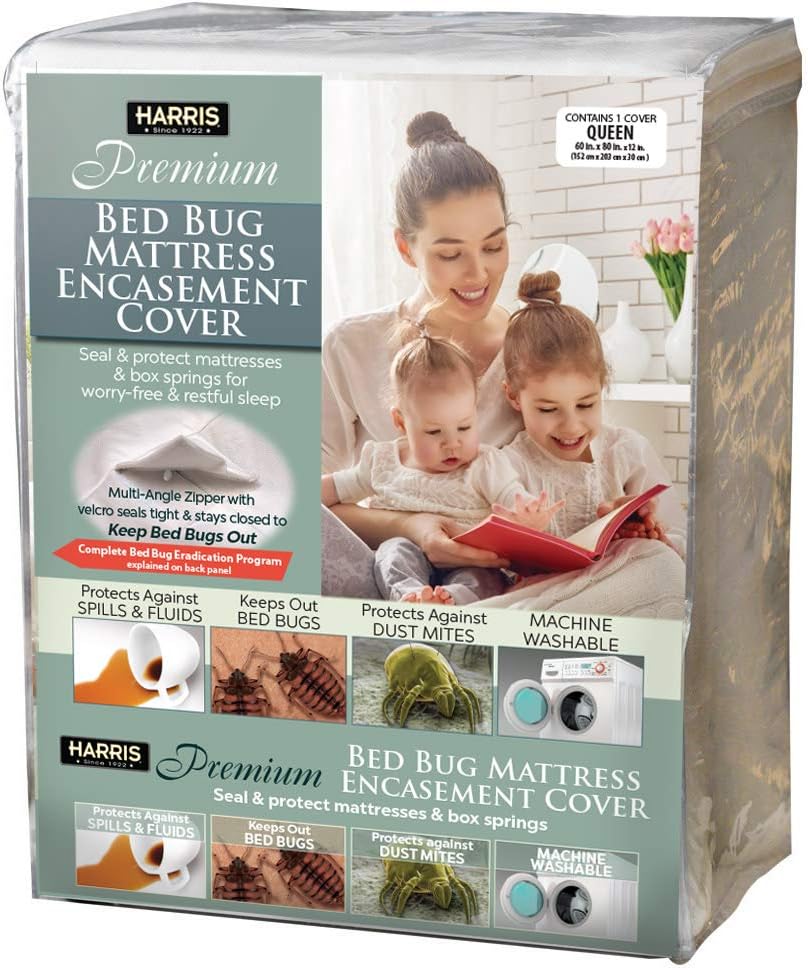
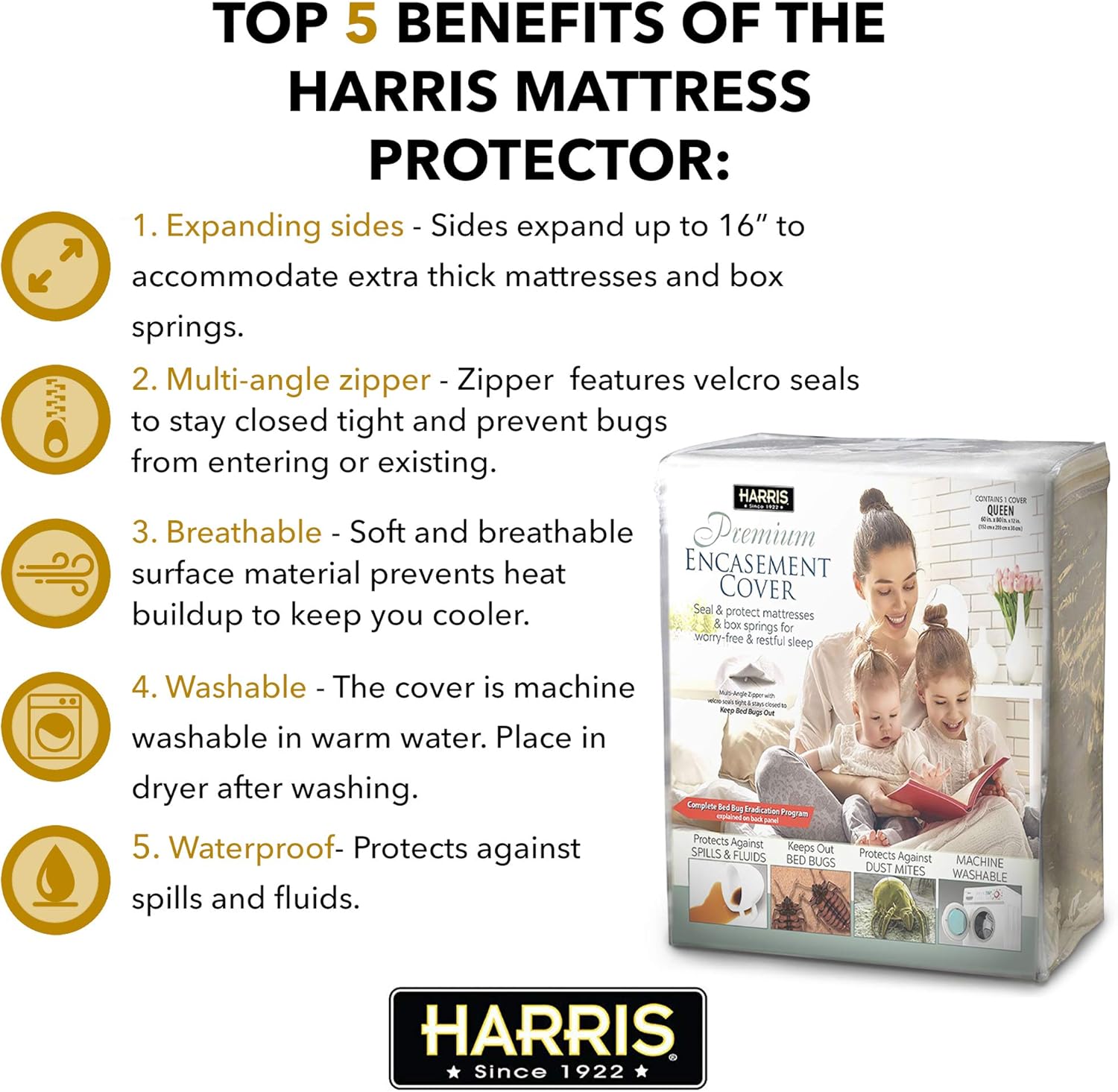
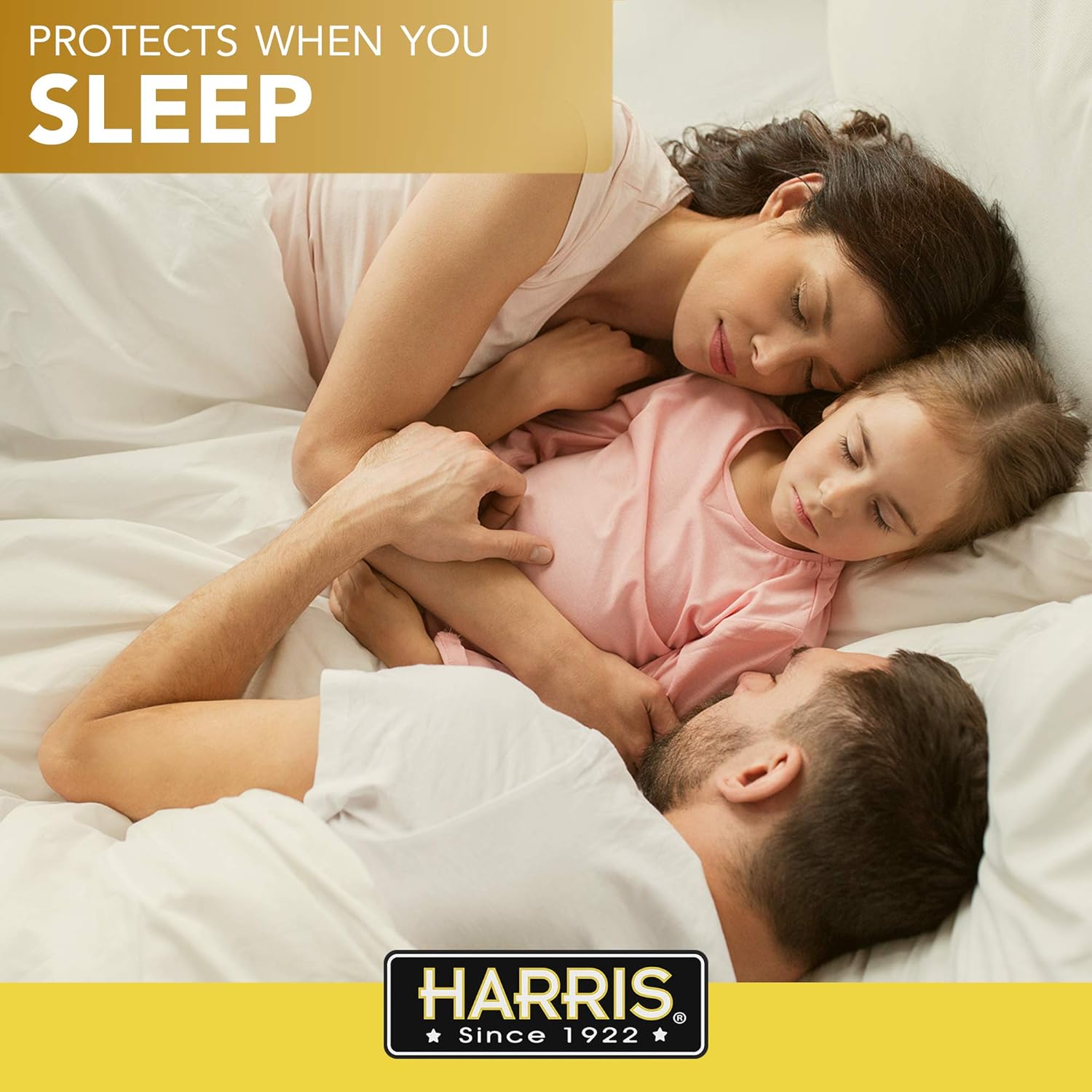
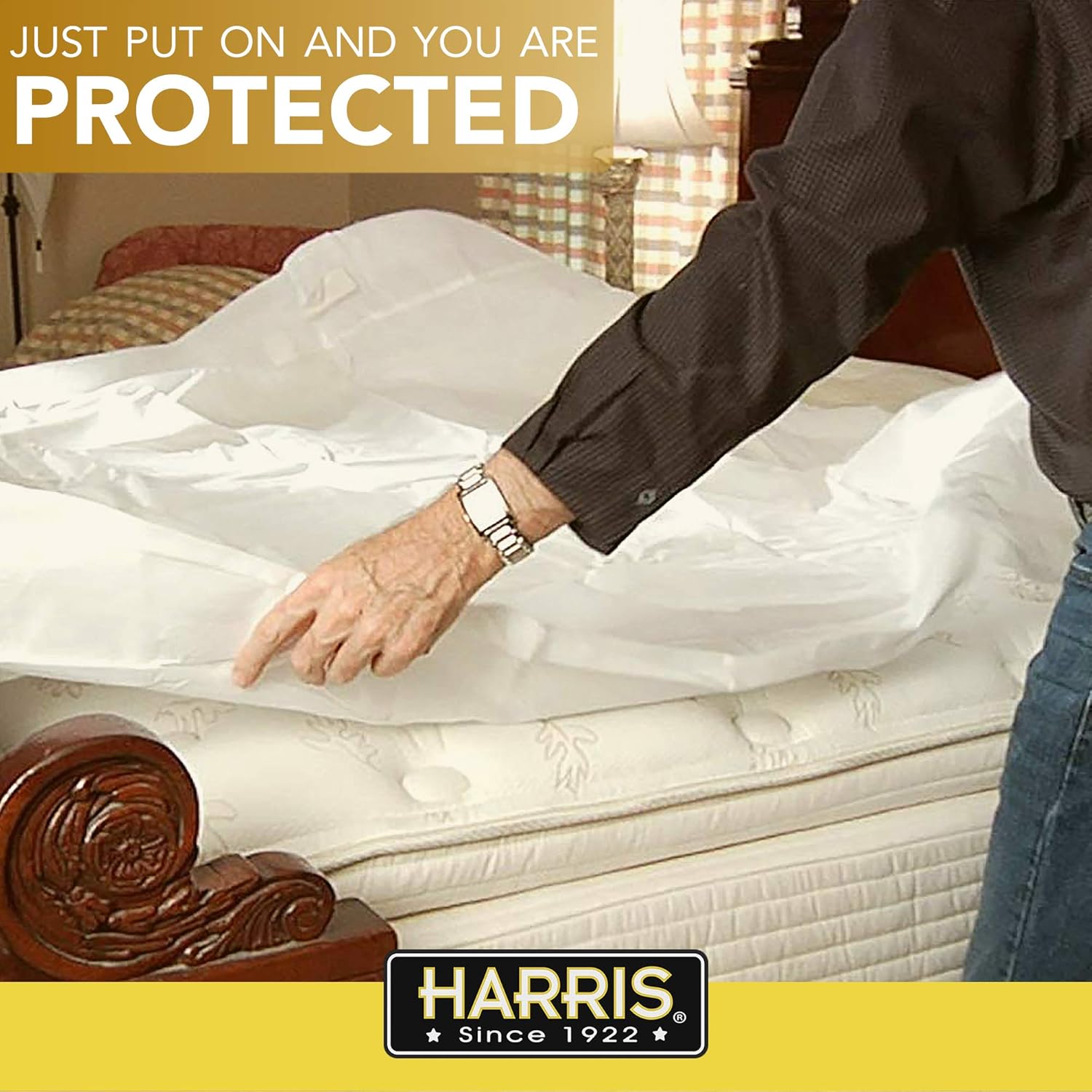
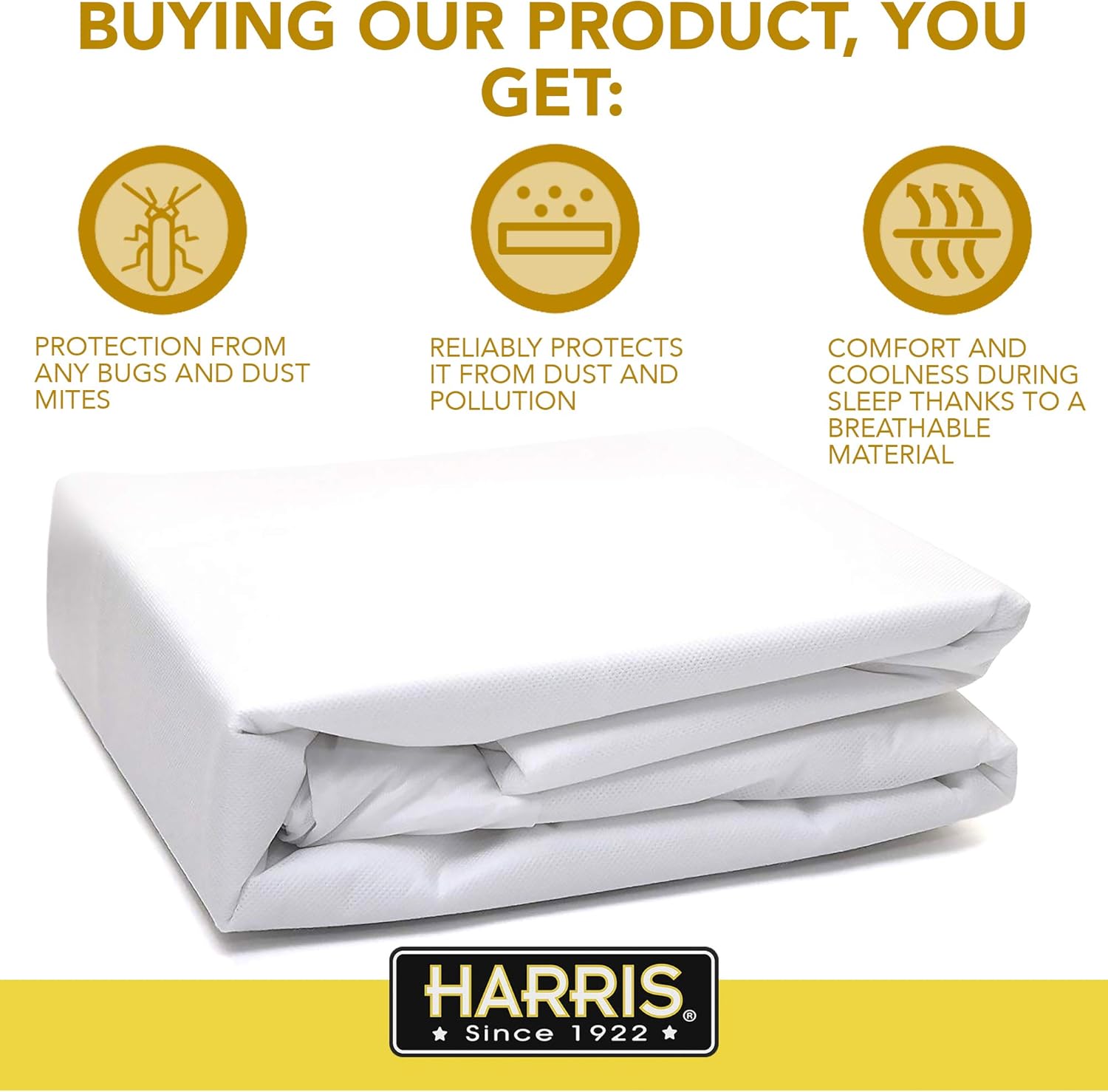
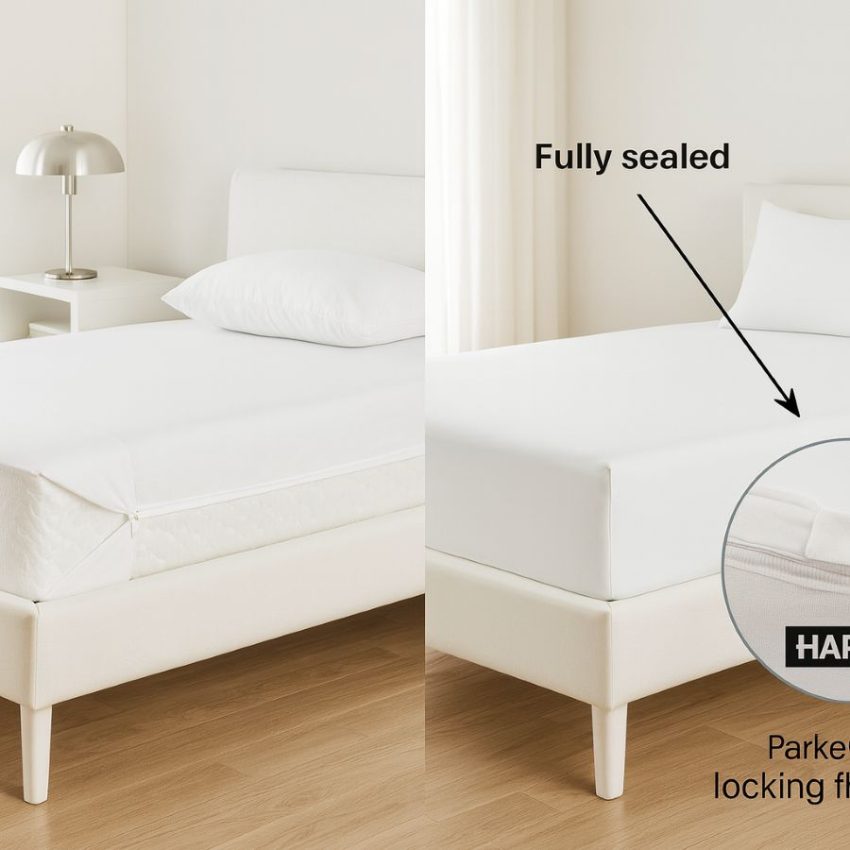
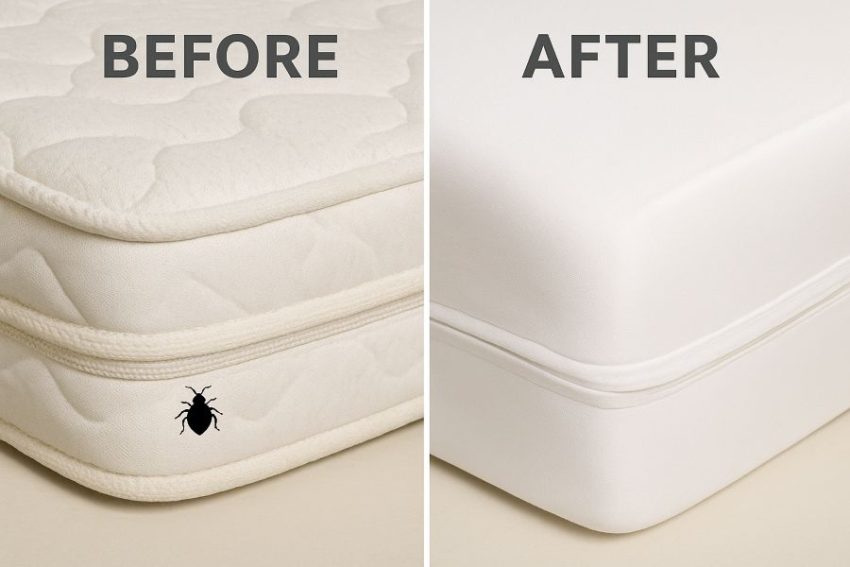
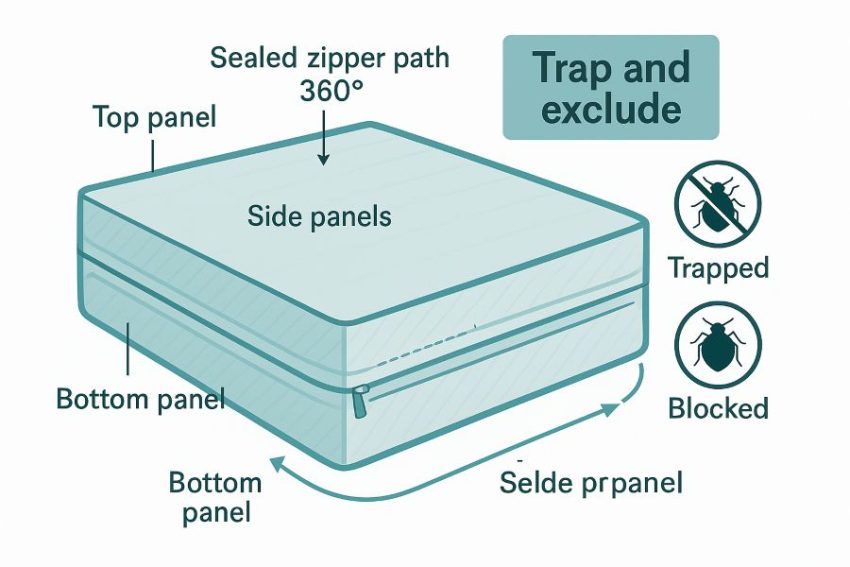
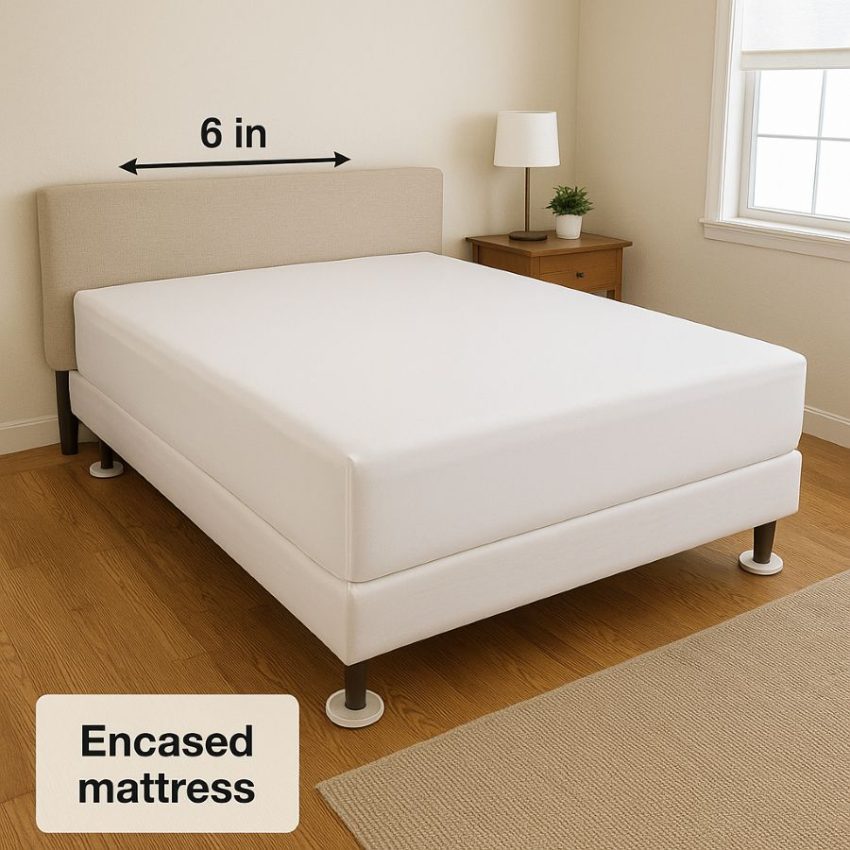
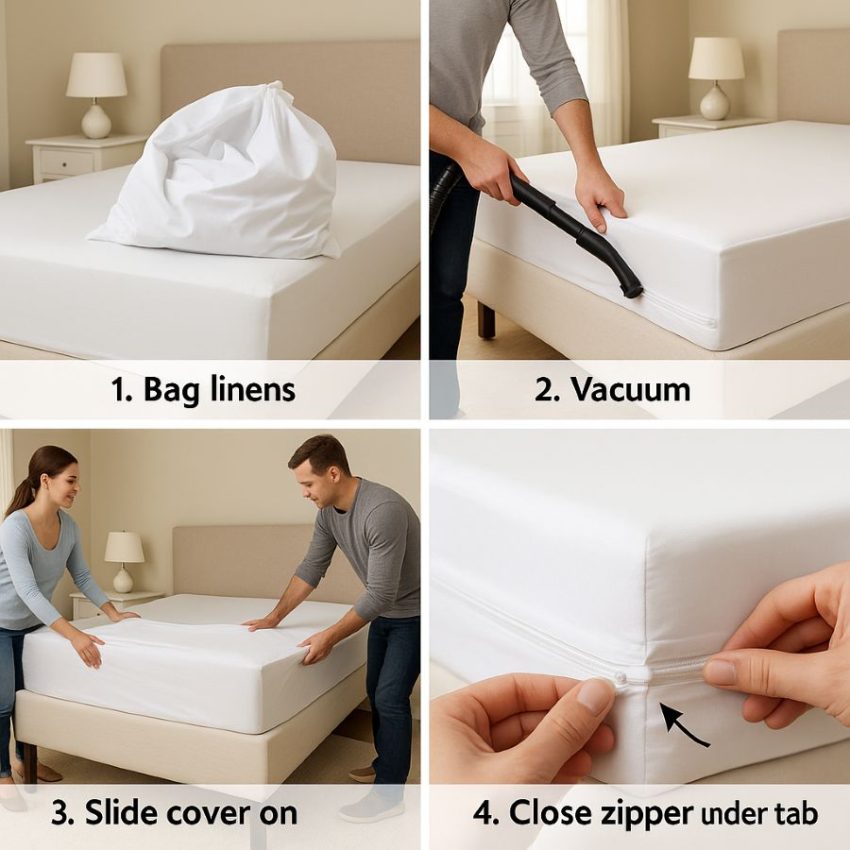
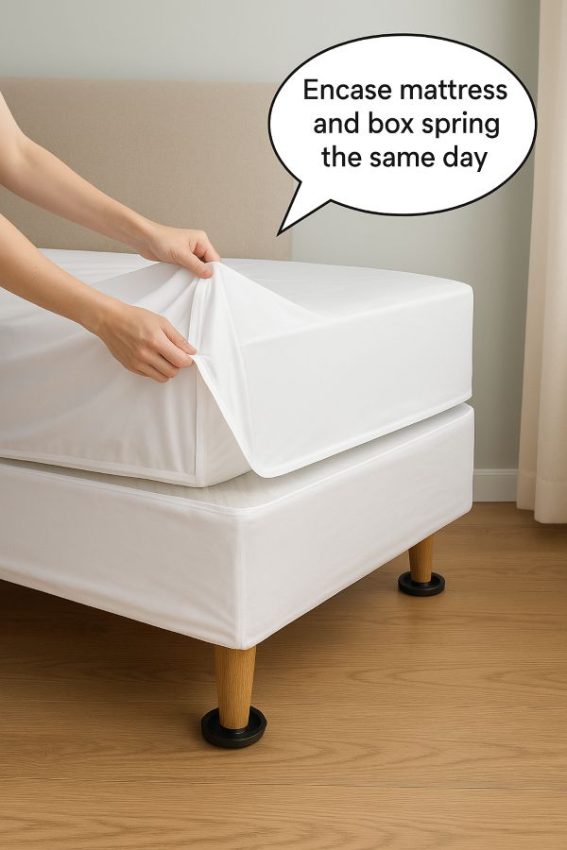
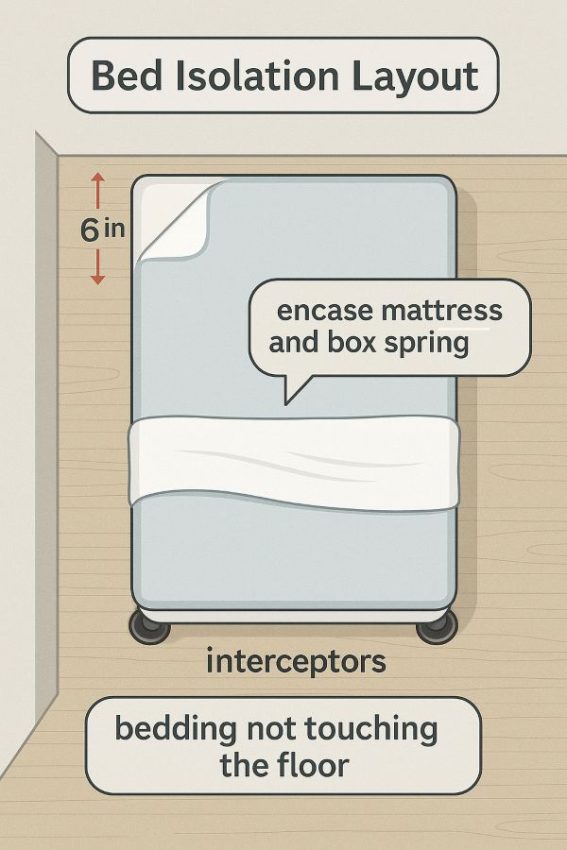
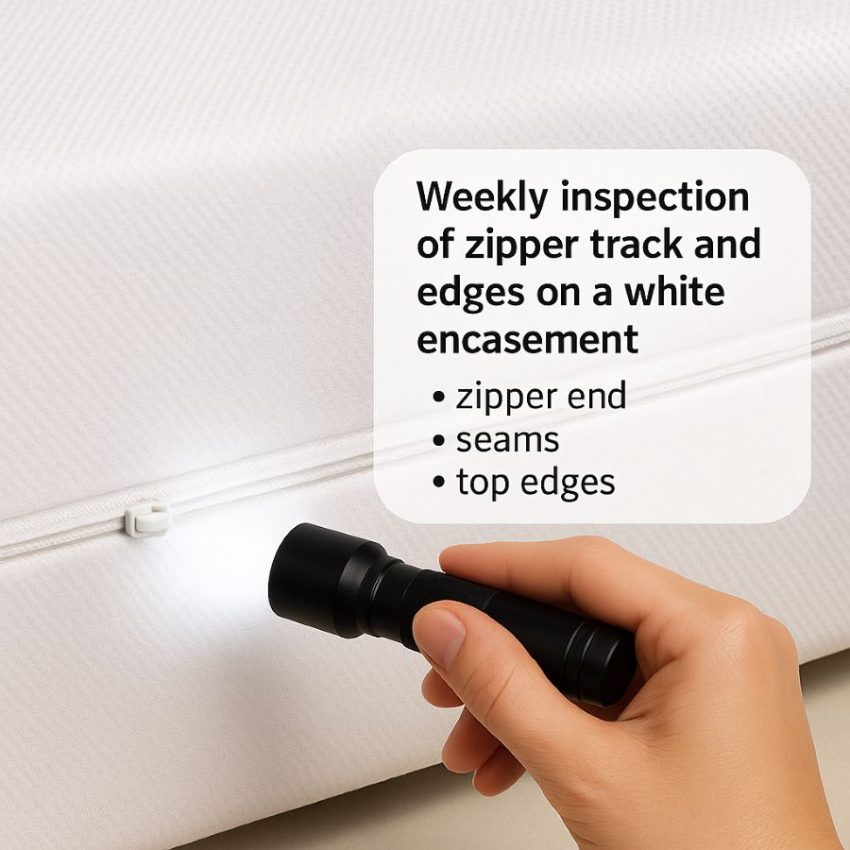
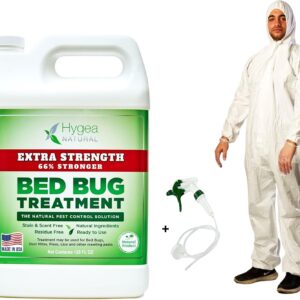
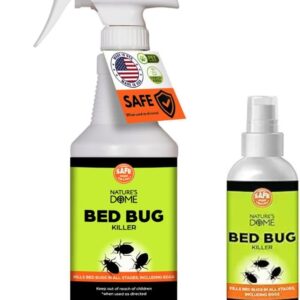
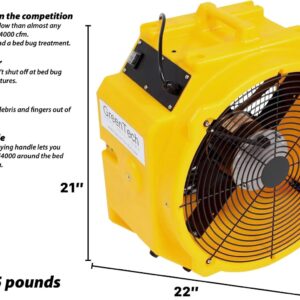
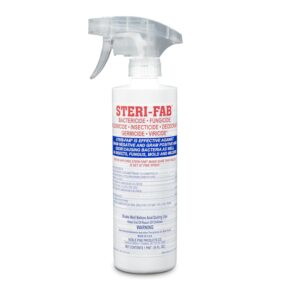
Reviews
There are no reviews yet.